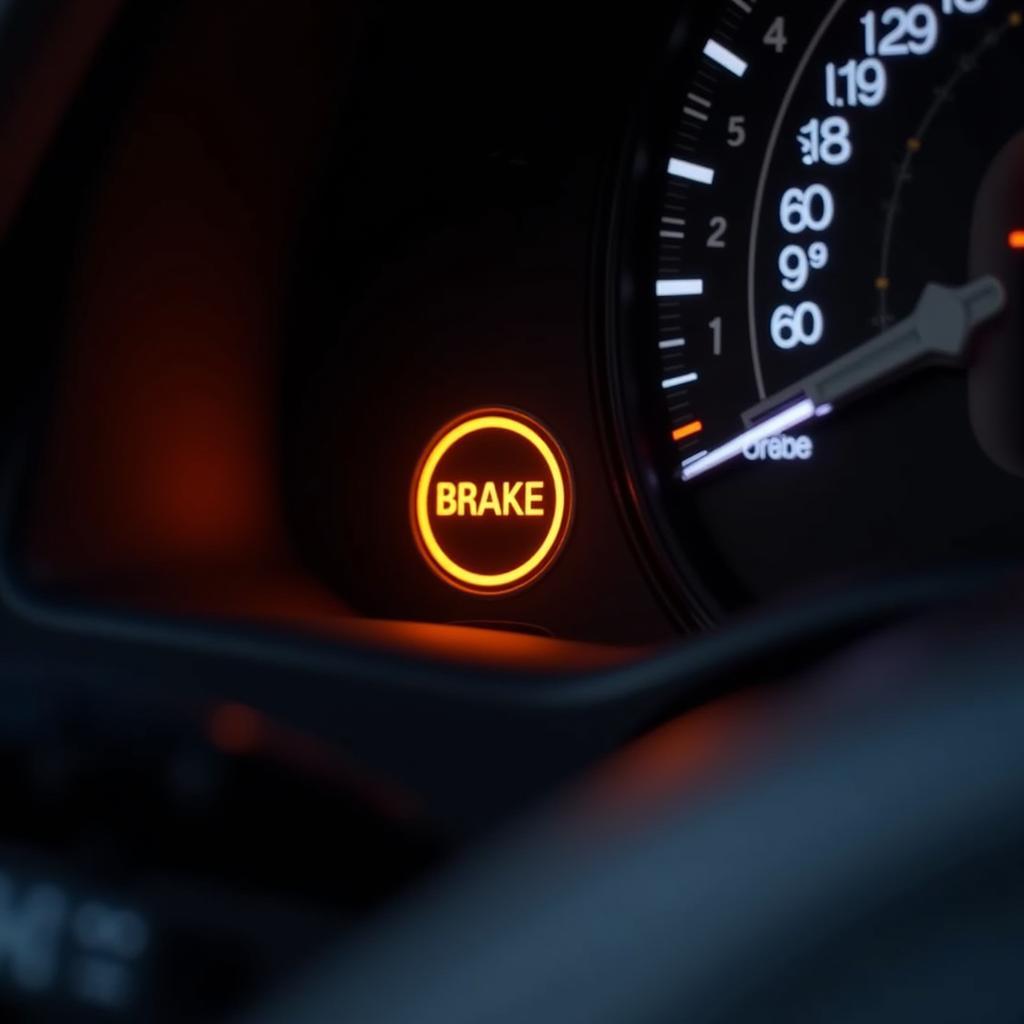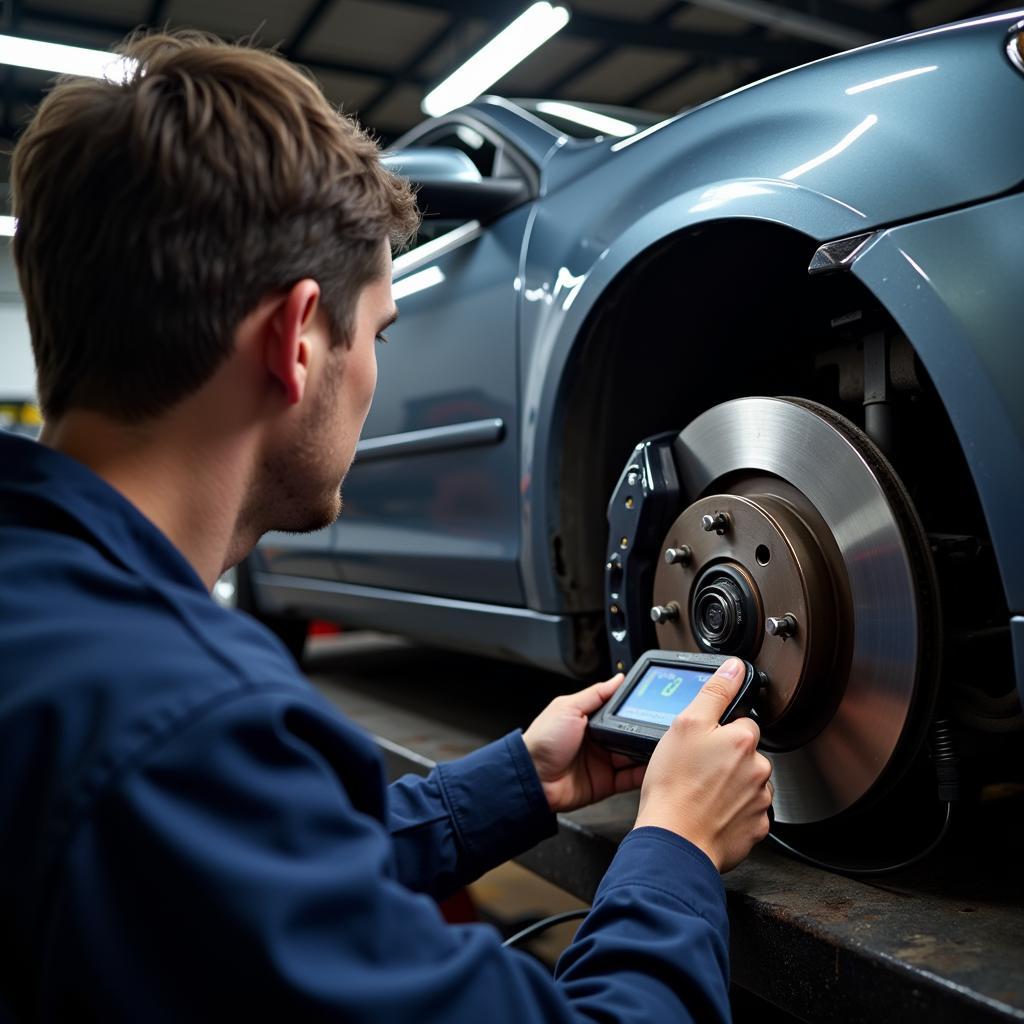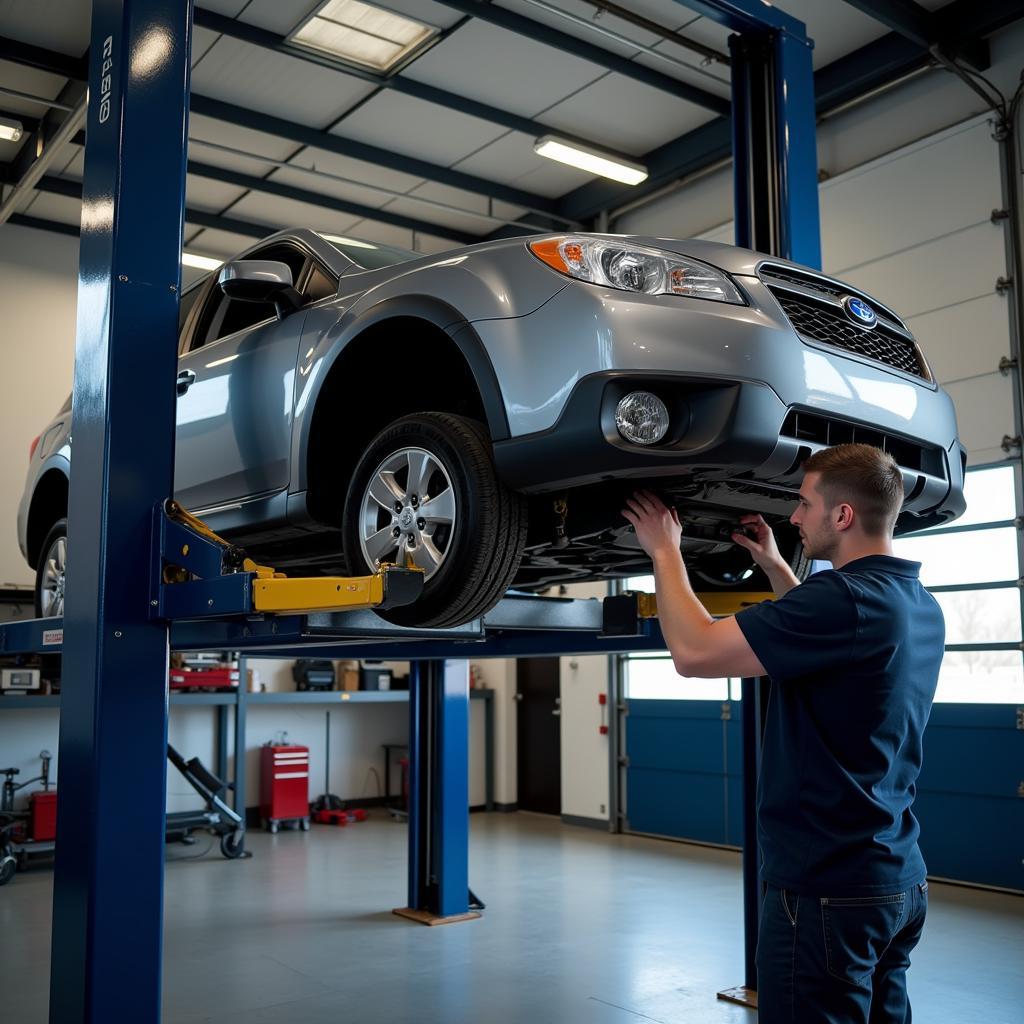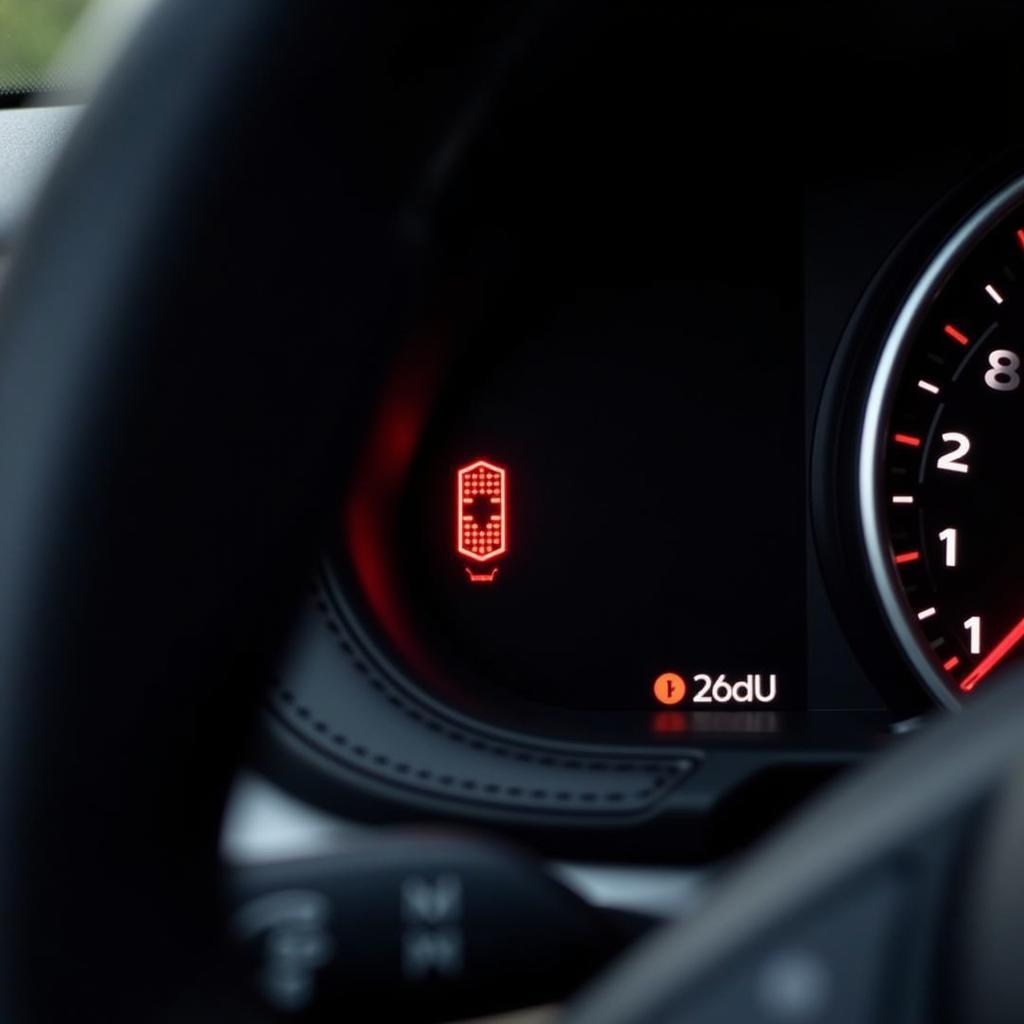The brake assist system warning light, often appearing as a circle with “BRAKE” or “ABS” inscribed, signals a potential issue with your car’s braking system. This critical safety feature, designed to provide maximum braking power during emergencies, can malfunction due to various reasons. Understanding why this light appears and how to address it is crucial for your safety on the road.
Understanding Your Car’s Brake Assist System
Before delving into the warning light, let’s grasp how the brake assist system operates. It works in conjunction with your Anti-lock Braking System (ABS), using sensors to monitor wheel speed. When it detects sudden, forceful braking, signifying a potential emergency, the brake assist system automatically applies maximum braking force. This action can mean the difference between a safe stop and a collision.
Common Causes of the Brake Assist System Warning Light
The illumination of the brake assist system warning light doesn’t necessarily mean catastrophic failure. It could indicate a range of issues, some minor and easily fixable, others requiring professional attention. Here’s a breakdown of the common culprits:
- Low Brake Fluid: This is the most common cause. The brake assist system needs adequate fluid pressure to operate effectively. Low brake fluid can indicate a leak, which requires immediate attention.
- Faulty ABS Wheel Speed Sensor: These sensors, usually located near the wheels, transmit data to the ABS control module. A malfunctioning sensor can disrupt this data flow, triggering the warning light.
- ABS Module Issues: The ABS module, the system’s brain, can sometimes experience electrical or software malfunctions. Diagnosing this requires specialized equipment and expertise.
- Blown Fuse or Electrical Problem: The brake assist system relies on electrical signals. A blown fuse or wiring issue can disrupt these signals, leading to the warning light.
- Brake Pad Wear: While not directly linked to the brake assist system, worn brake pads can sometimes trigger the warning light, especially in newer car models.
 Brake Assist System Warning Light on Dashboard
Brake Assist System Warning Light on Dashboard
What to Do When the Brake Assist System Warning Light Comes On
Seeing this warning light can be unsettling, but it’s crucial to stay calm and take the following steps:
- Safely Pull Over: As soon as it’s safe, pull over to the side of the road. Continuing to drive with a potential brake assist system issue can be dangerous.
- Check Your Brake Fluid: This is the first thing you should check. If the fluid level is low, adding more might temporarily resolve the issue. However, it’s vital to get the leak addressed by a mechanic as soon as possible.
- Inspect Your Tires and Brakes: Ensure your tires are properly inflated and visually inspect your brakes for any signs of wear and tear.
- Avoid Heavy Braking: If you must drive to a mechanic, avoid sudden stops or heavy braking as much as possible.
When to Seek Professional Help
If checking the brake fluid level doesn’t resolve the issue, or if you notice any other unusual symptoms like grinding noises or a spongy brake pedal, it’s imperative to seek professional help immediately.
“Ignoring a brake assist system warning light is like ignoring a flashing ‘DANGER’ sign,” says John Miller, a seasoned automotive electrician with over 20 years of experience. “It’s better to err on the side of caution and get your car checked by a professional.”
 Mechanic Inspecting Car Brake System
Mechanic Inspecting Car Brake System
Diagnosing the Problem: How Mechanics Pinpoint the Issue
Mechanics utilize advanced diagnostic tools to identify the root cause of the brake assist system warning light. These tools connect to your car’s onboard computer, reading error codes and sensor data to provide a clear picture of the problem. Here’s a glimpse into their process:
- Retrieve Error Codes: The mechanic connects a scan tool to your car’s OBD-II port, reading diagnostic trouble codes (DTCs) stored in the car’s computer. These codes act like clues, pointing to the specific area of the system experiencing issues.
- Analyze Sensor Data: Beyond error codes, the scan tool allows mechanics to view live data from various sensors within the brake assist system, including wheel speed sensors, brake pressure sensors, and the ABS module.
- Visual Inspection: While technology plays a significant role, a thorough visual inspection remains critical. Mechanics inspect brake lines, calipers, rotors, and the ABS module itself for any visible damage or signs of wear.
 Car on Lift for Brake Repair
Car on Lift for Brake Repair
Cost of Repairing Brake Assist System Issues
The cost of addressing a brake assist system warning light can vary significantly depending on the underlying cause and the complexity of the repair.
- Simple Fixes: Issues like a blown fuse or low brake fluid can be relatively inexpensive to fix, costing anywhere from $50 to $150.
- Sensor Replacement: Replacing a faulty ABS wheel speed sensor typically costs between $100 and $300 per sensor, including parts and labor.
- ABS Module Repair/Replacement: This is the most expensive repair, potentially costing upwards of $1,000 or more.
Prevention is Key: Maintaining Your Brake System
Regular maintenance plays a crucial role in preventing brake assist system issues. Here’s how to keep your brakes in top shape:
- Regular Brake Fluid Checks and Changes: Consult your car’s owner’s manual for the recommended brake fluid change interval.
- Timely Brake Pad Replacement: Don’t wait until you hear grinding noises. Replace your brake pads as soon as they wear down to the recommended thickness.
- Annual Brake Inspections: A yearly brake inspection by a qualified mechanic can help identify potential issues before they escalate.
Conclusion
The brake assist system warning light, though concerning, is not a reason to panic. By understanding the potential causes, knowing what to do when it illuminates, and seeking professional help promptly, you can ensure your safety on the road. Remember, your brakes are your car’s most crucial safety feature – take care of them, and they’ll take care of you.


